What do the world’s most successful companies have in common? A passionate workforce, strong leadership, a dynamic product—and plenty of plants. Step inside the offices of Google, Amazon, Airbnb, and Etsy and you’ll be greeted with lush greenery and nods to biophilic design at every turn. And for good reason: Nature-inspired design continues to prove effective at boosting workplace morale and productivity. Let’s explore some inspiring biophilic office ideas and how you can apply these concepts in your own workspace.
Amazon: The Spheres
The centerpiece of Amazon’s new Seattle HQ, the Spheres, is an urban rainforest seven years in the making. Opened earlier this year, the glass structures are filled with 40,000 plants (including a 55-foot tree and five-story living wall) and maintains a humidity level more akin to a greenhouse—with 60 percent humidity compared to the typical 30.
“We wanted people to come in and feel differently at work. They’re going to come and connect with nature,” Ron Gagliardo, the lead horticulturalist on the project told CBS News. “You can’t be afraid to think big.
If you can’t afford to think quite so big (Amazon reportedly spent upwards of $4 billion on its Seattle campus), there are plenty of ways to implement similar techniques on a smaller scale. The Spheres creates privacy with small nooks and alcoves that are closed off from the otherwise open floor plan. Refuge space is a cornerstone of successful biophilic design, so siphoning off private rooms in your office using walls, curtains, or even tall plants, could be beneficial.
The Spheres’ shape is modeled after the Catalan, a naturally occurring pattern in nature. You too can mirror the lines and arrangements of the outdoors in your space by installing carpet that resembles tree rings or hanging artwork that depicts the swirl of a seashell, for example.
Key takeaway: Create refuge spaces—quiet, private areas for focused work. Even on a smaller scale, you can use plants, partitions, or curtains to create these calming zones.
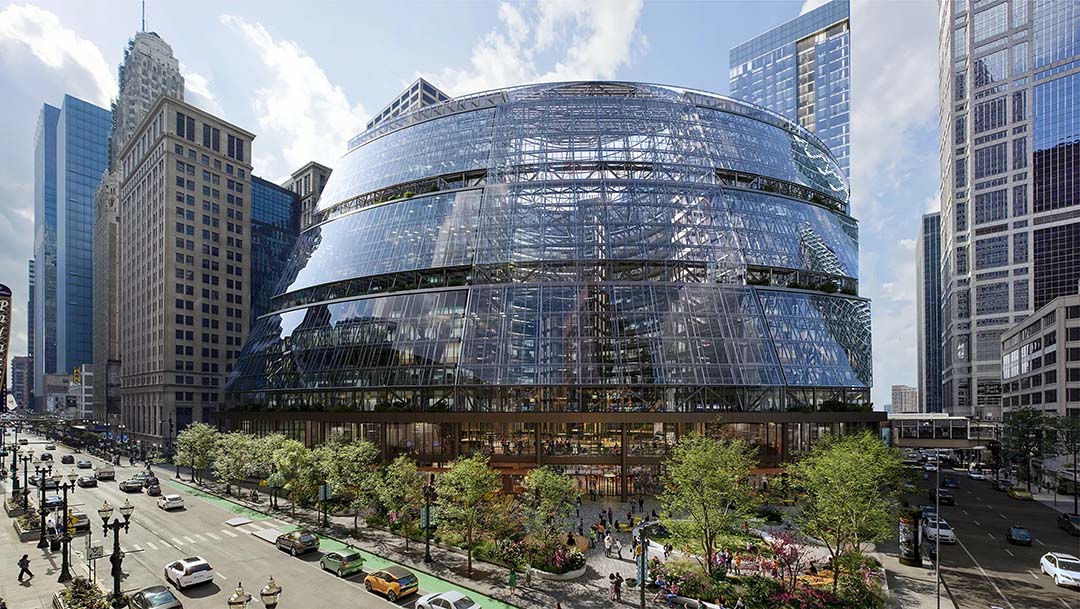
Google: Bright, naturally lit spaces
At Google’s Chicago office, located in the iconic Thompson Center, designers took advantage of the building’s massive glass atrium to flood the space with natural light. This design ensures that employees have access to daylight throughout their workday, supporting their energy levels and productivity. By mapping out space so that every conference room and desk had access to natural light, they hoped to help combat some of the most prevalent health issues of today, including obesity, diabetes, and depression—all of which have been tied to an out-of-sync circadian rhythm. The office also incorporates indoor plants, vibrant colors, and flexible seating arrangements to create a lively yet calming environment.
A nod to the healing power of light, the finished building lifts the veil between employees and the surrounding environment. As Amanda Sturgeon, one of the foremost leaders in biophilic design, wrote of the office in her book, Creating Biophilic Buildings, “One project goal was to carefully create daylit spaces that would promote the body’s natural circadian rhythms, which can improve productivity and reduce low-level stress. Occupants access natural light through the open offices along the perimeter of the building and through the multi-story atrium.”
Even if you can’t manage to install more windows in your space right away, reconfiguring the desk layout so more employees can experience daylight or buy a few circadian-supportive light fixtures are two quick fixes.
Key takeaway: Maximize natural light by arranging desks near windows or using light fixtures that mimic daylight if windows aren’t an option.
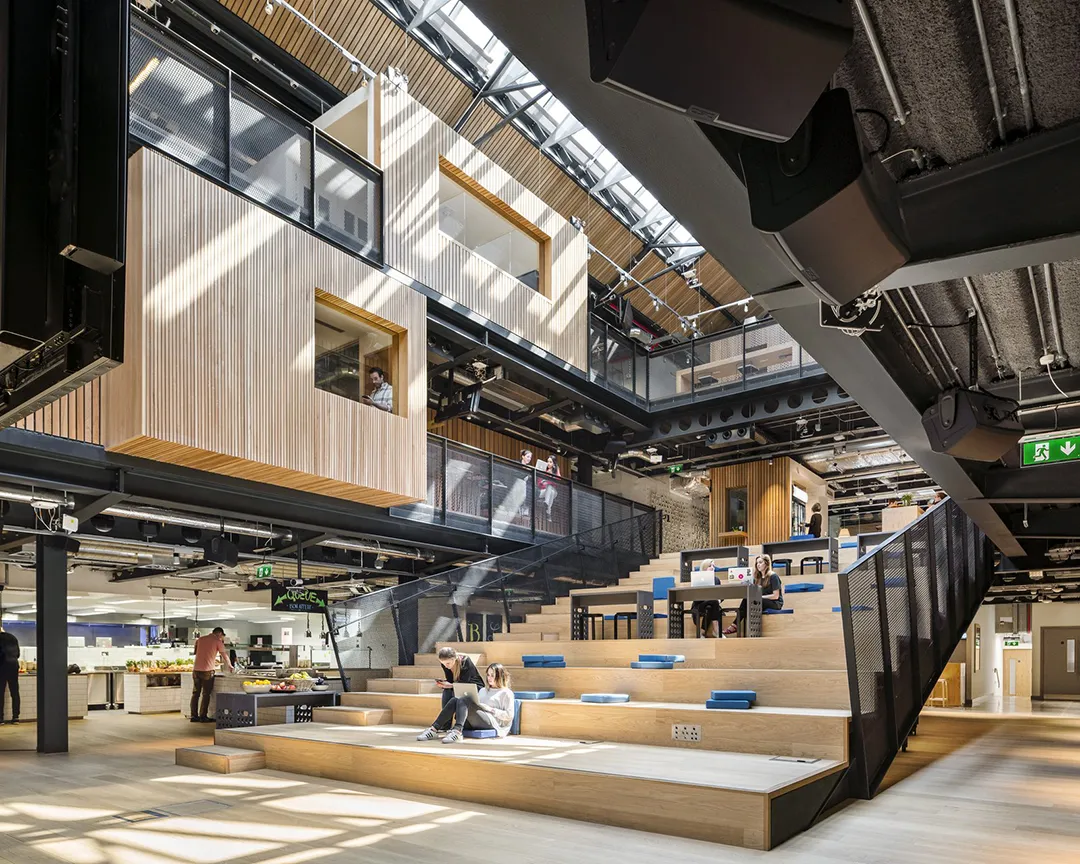

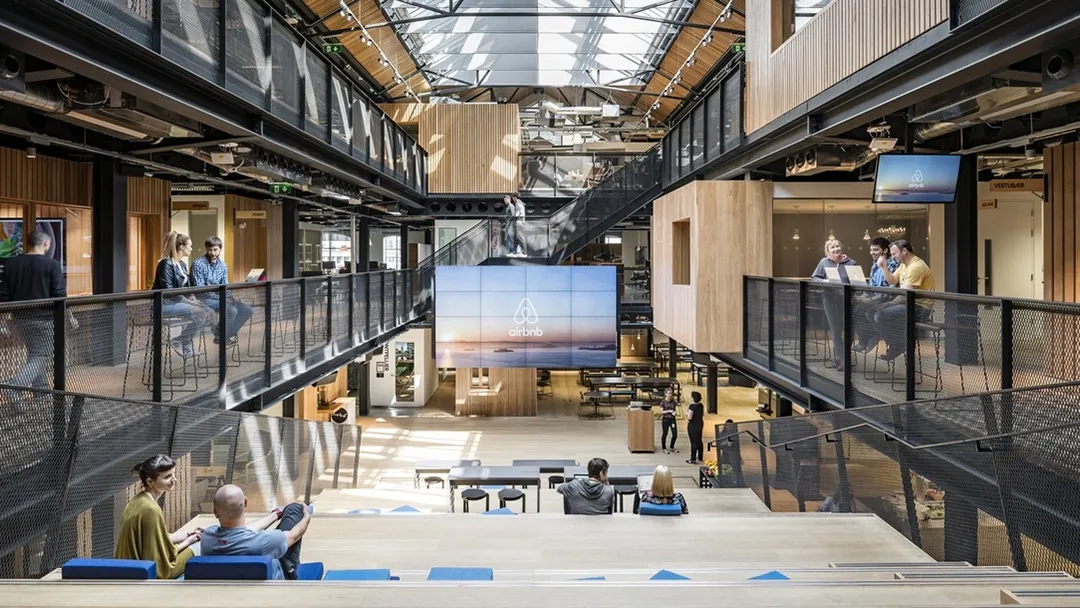
Airbnb: Warm and open woodsy vibes
Airbnb’s Dublin headquarters is a beautiful example of how a communal office space can promote collaboration. Instead of dividing its massive 43,000-square foot warehouse-turned-HQ into separate work silos, Airbnb designers chose to keep it mostly open, centered by a large, communal atrium. Even in the dozens of smaller workspaces surrounding this main area, they opted for large tables over individual desks—crafting what’s known in biophilic design as “prospect space” in the process. This layout mimics the expansive, unobstructed views you’d find in the natural environment, and can boost productivity when paired with the aforementioned refuge spaces.
Another notable aspect of Airbnb’s design is its extensive use of natural woods—on everything from the massive central bleachers to the wall treatments. There’s evidence that people are actually more satisfied and productive when they work in an area that has plenty of wooden surfaces, so consider choosing this material over synthetics like plastic the next time you’re in the market for new office furniture or decor.
Key takeaway: Incorporate natural materials like wood, stone, or bamboo to bring the outdoors in. These materials help create a cozy, biophilic environment.
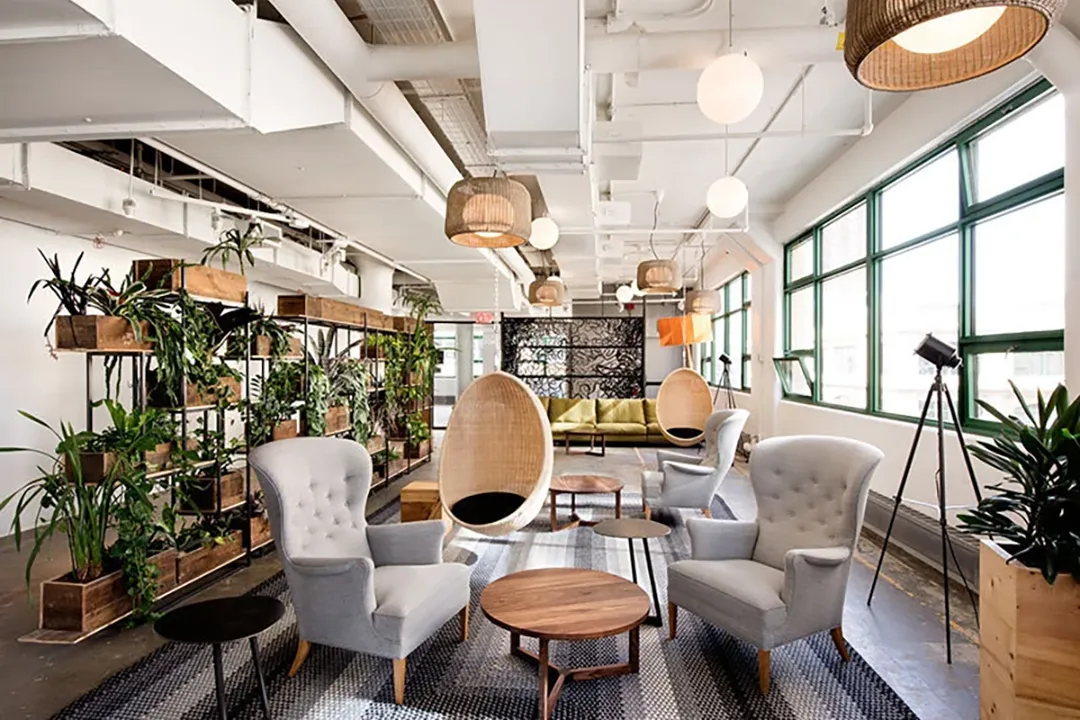
Etsy: A sustainable green oasis
Etsy’s reportedly set out to make its Brooklyn HQ feel like a “Green Embrace” by using reclaimed woods, living walls, and water features to create a respite for employees that feels worlds away from the bustling city streets outside. Punctuated with bright, colorful crafts signature to the brand, the whimsical office was inspired by the International Living Future Institute’s Living Building Challenge. This framework goes beyond LEED certification to designate built systems that are entirely self-sustaining, like those you’d find in nature.
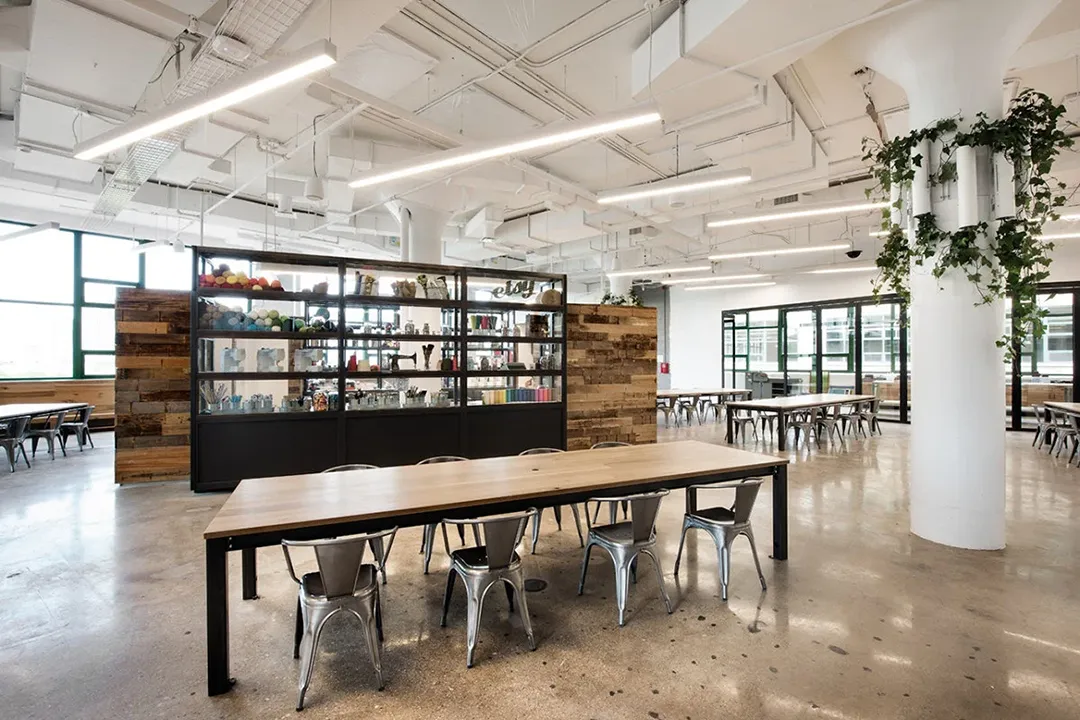
In Etsy’s case, being a living building means using locally sourced, FSC-certified woods, developing systems to send zero waste to landfill, installing solar panels, and using rainwater captured on the roof to water dozens of living walls that serve as lush focal points in the space.
Key takeaway: Combine greenery with sustainable design practices to promote environmental responsibility and employee wellness. Start small with potted plants or a vertical garden to make an impact.
Transform your office with biophilic design
Ready to enhance employee well-being and boost productivity? Let Plant Solutions help you incorporate natural elements into your office design with our professional plant installations, living walls, and more.
Similar green displays are in high demand these days, lauded for their ability to provide an instant, dramatic office refresh that is relatively low-maintenance. If you too are thinking of infusing your office with a living wall, Plant Solutions’ MossWallArt is one of a kind. Made from 100% real mosses, lichens, natural woods and organic features, it’s recently been recognized by the Living Future Institute for its unwavering commitment to environmentally friendly design. Completely free of chemicals that could prove harmful to human health and made using FSC-certified wood, they are an honest representation of nature’s beauty that would be at home in any office.
Turning your office into a nature-inspired hub doesn’t have to be time-consuming or costly. Implementing these strategies, anybody can reap the restorative benefits of nature right from their desk.
Biophilic Office Ideas You Can Try
These companies offer incredible examples, but you don’t need a massive budget to bring biophilic design to your workspace. Here are some actionable biophilic office ideas:
- Add Greenery: Place plants throughout your office to improve air quality and create a calming atmosphere. Consider low-maintenance options like pothos or snake plants.
- Use Natural Materials: Incorporate wood, stone, or even natural fabrics like wool for a grounded, organic feel.
- Let the Light In: Rearrange desks or use light-diffusing curtains to make the most of natural light. If windows are scarce, consider circadian-supportive lighting.
- Create Refuge Spaces: Set up quiet zones with comfortable furniture, plants, and soft lighting where employees can recharge.
- Incorporate Water Features: Even a small tabletop fountain can add a relaxing, nature-inspired element to your space.
Why Biophilic Office Ideas Matter
Research shows that biophilic design can reduce stress, improve focus, and enhance creativity. By integrating elements like plants, natural light, and sustainable materials, you can create a workspace that’s not only beautiful but also beneficial for your team’s well-being.
Start small, and over time, you’ll see how these biophilic office ideas can transform your workspace into a healthier, more inspiring environment for everyone.
Discover the benefits of biophilic design
Want to know how biophilic design can impact your workplace? Get in touch with us for a personalized consultation and start creating an office that promotes well-being and productivity.
